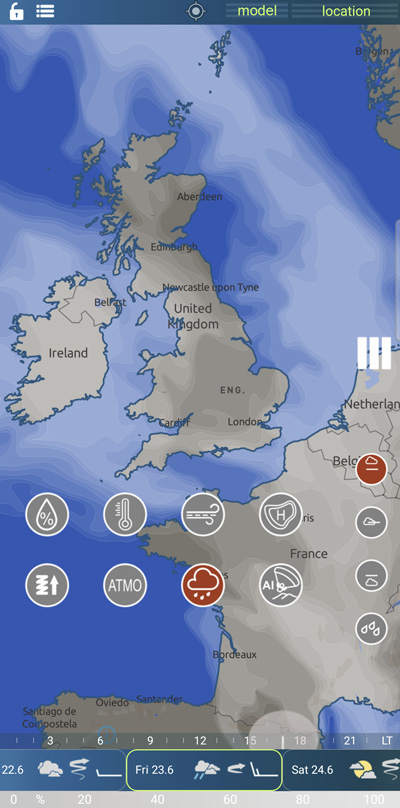How to do it
Select the main map icon with clouds and rain and select the icon for the top cloud. The top cloud cover will be displayed in the coverage range of 0..100% Additional cloud and precipitation maps can be added or removed by clicking on the corresponding icon.
On the formation of top clouds.
High-level clouds are clouds that typically form at altitudes above 6,000 meters (20,000 feet) in the Earth's atmosphere. These clouds appear as thin, wispy, and often translucent clouds with a fibrous or feathery texture. Examples of high-level clouds include cirrus, cirrostratus, and cirrocumulus clouds.
The formation of high-level clouds is influenced by similar factors to other cloud types:
Moisture: High-level clouds form when there is enough moisture present in the upper layers of the atmosphere. This moisture can come from the transport of humid air from lower levels or from the cooling of air at high altitudes.
Condensation: As the upper-level air cools, it reaches its dew point temperature, causing water vapor to condense into visible cloud particles. However, at these high altitudes, the temperature is often extremely low, and the water vapor may freeze into ice crystals instead of forming liquid droplets.
Atmospheric Dynamics: The dynamics of the upper atmosphere, such as jet streams or areas of wind shear, can play a role in the formation and maintenance of high-level clouds. These dynamics can provide the necessary lifting mechanisms to lift moist air to high altitudes.
High-level clouds can exhibit various characteristics, from delicate and wispy cirrus clouds to thin and veil-like cirrostratus clouds. They are often found in the vicinity of warm fronts or in the outflow regions of thunderstorms. High-level clouds are typically associated with fair weather conditions but can also indicate the approach of a weather system.
It's important to note that cloud formation is a complex process influenced by multiple atmospheric factors, and the specific formation mechanisms of high-level clouds may vary depending on the region and local weather conditions.